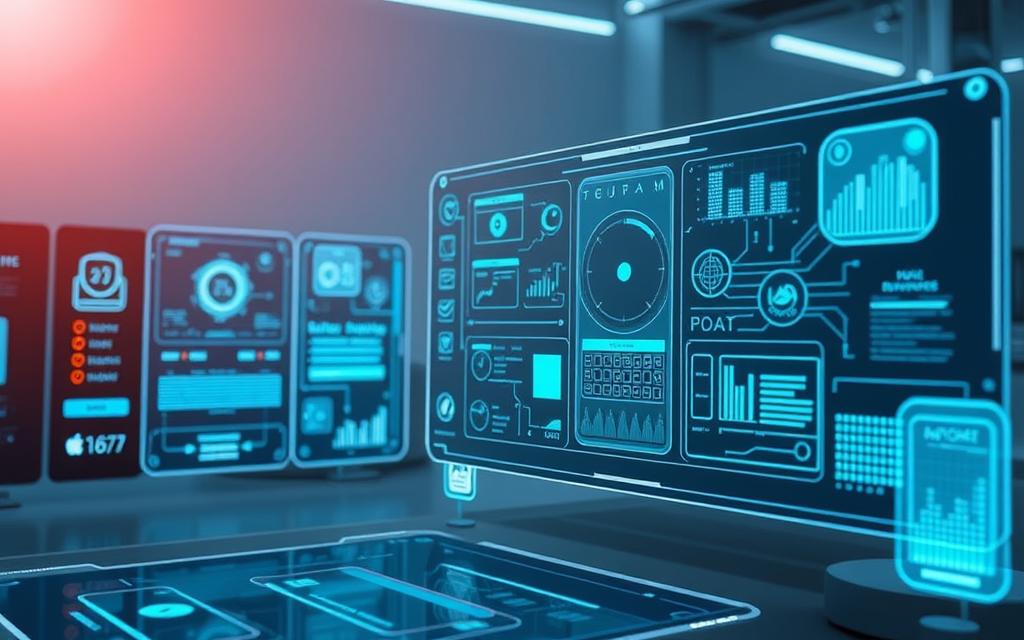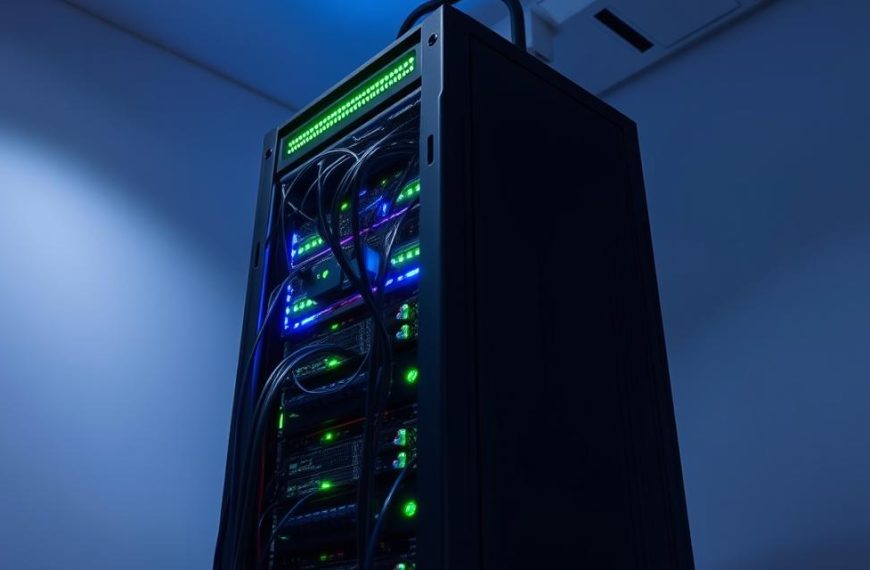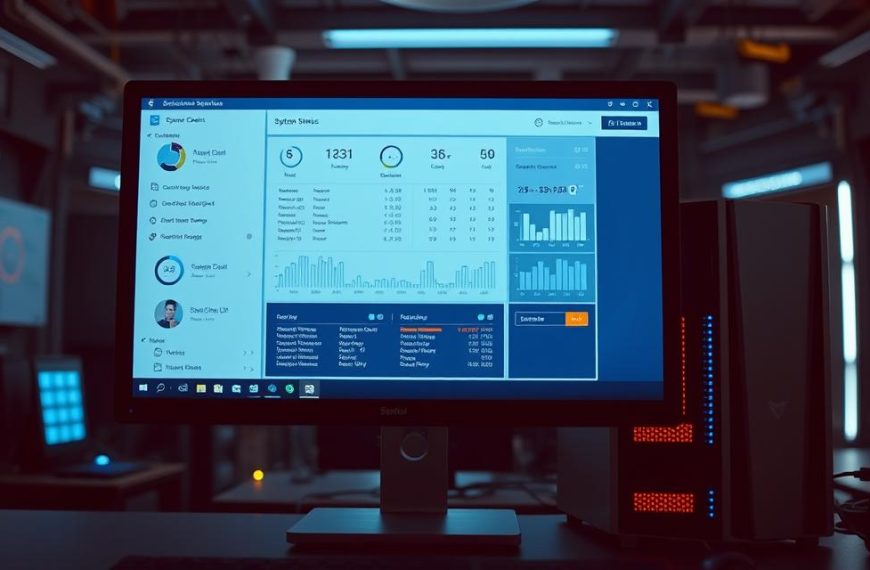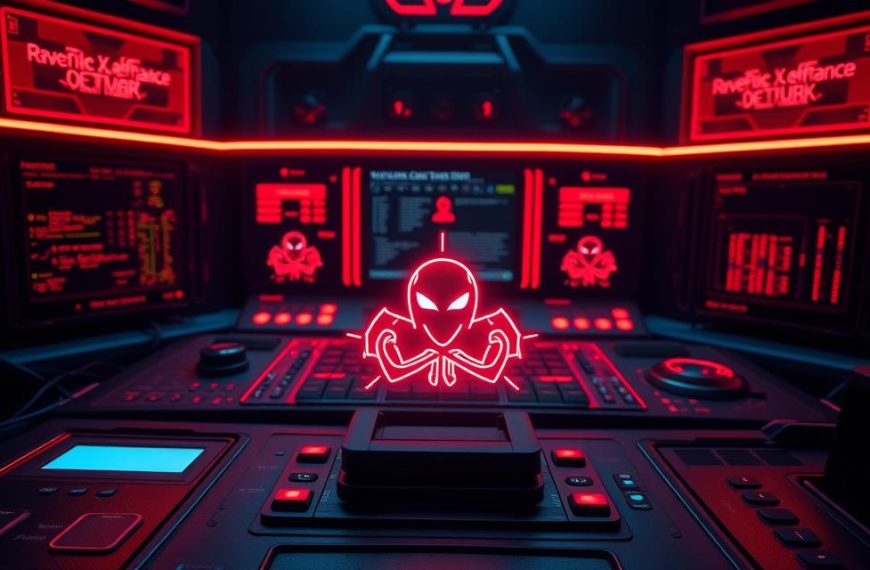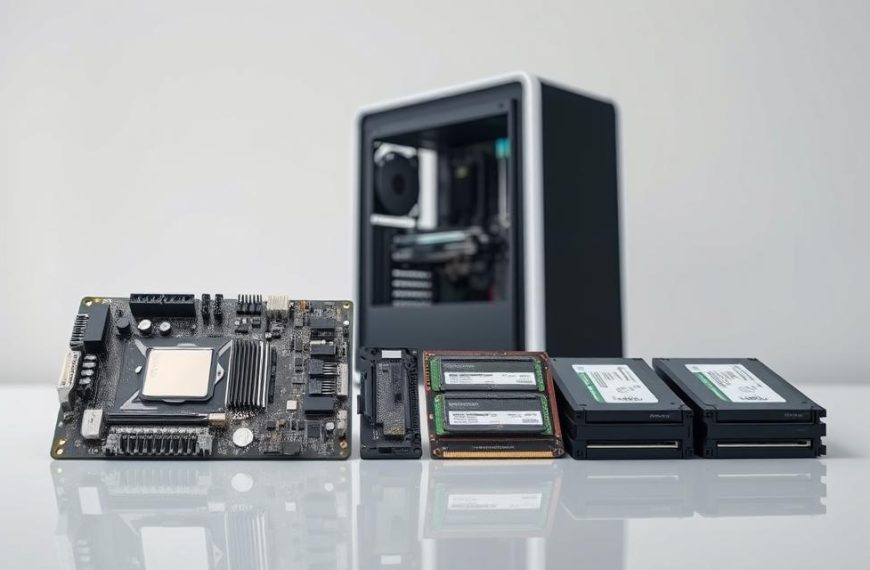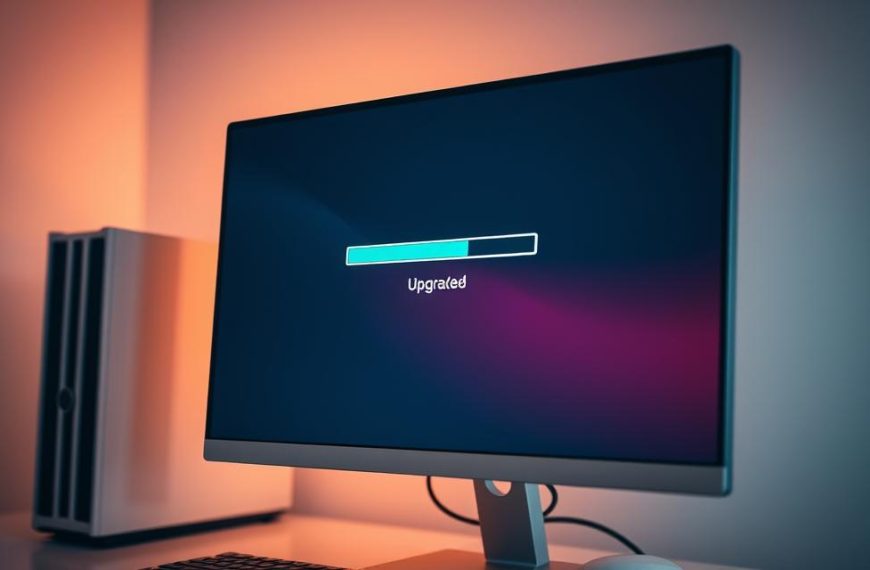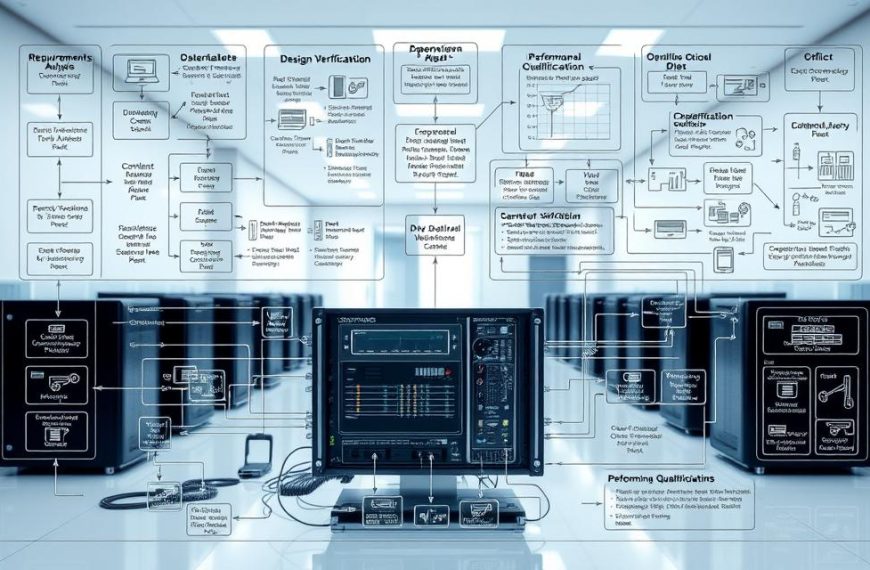Imagine trying to conduct an orchestra without a conductor. Musicians would play out of sync, chaos would reign, and beautiful music would be impossible. This shows how important an operating system is in your computer.
This essential software acts as your digital maestro. It manages all hardware components and software applications. It provides the basic framework for programmes to run smoothly and for users to interact with their machines efficiently.
Without this core software, every application would need its own user interface and low-level hardware code. This would make software development very complex and impractical for widespread use.
The operating system delivers services through application programming interfaces and user interfaces. These include both command-line interfaces and graphical user interfaces that we know today.
Understanding computer OS basics helps us see how technology works smoothly behind the scenes. This digital conductor makes modern computing possible through intelligent resource management.
Defining What is an Operating System in Computer
An operating system is the key link between us and our computers. It makes complex machine tasks easy for us to use. This is why we can all enjoy modern computing.
The Core Concept of an Operating System
An operating system is a set of programmes that manages our computer’s hardware. It acts like a digital conductor, making sure everything works smoothly.
The OS does many important jobs at once:
- It acts as a middleman between us and the computer hardware
- It manages how much memory and processing power each programme gets
- It controls devices like printers and hard drives
- It gives a stable place for programmes to run
This OS core concept is the same for all systems, but each one is different. The OS makes sure programmes can share resources without problems.
Historical Evolution of Operating Systems
Operating systems have come a long way. In the beginning, computers needed manual programming for every task.
Important moments in OS history include:
- 1960s: IBM’s OS/360 introduced a single operating system for many computers
- 1970s: UNIX started a trend that shapes today’s systems
- 1984: Apple’s Macintosh changed computing with its user-friendly interface
- 1990s: Windows and Linux made multitasking common
From single-tasking to today’s advanced systems, OSs have kept up with technology and user needs. The shift from text-based to graphical interfaces is a big step in OS history.
Now, OSs handle many tasks at once, using lots of memory and cores. They also keep our computers safe and stable. The future of computing looks to cloud-based and distributed OSs.
Core Functions and Components of an Operating System
An operating system is powerful because it can handle many tasks at once. These OS functions work together to make sure everything runs smoothly. They keep your computer safe and easy to use.
Process Management and Scheduling
At the heart of multitasking is process management. The OS decides how much time the CPU gives to each task. This way, many users or apps can use the processor without problems.
It also makes sure important tasks get done first. The OS handles everything from starting and stopping tasks to talking between them.
Memory Management Techniques
Modern OSs use smart memory management to make the most of limited memory. They use disk space as extra memory, making it seem like there’s more RAM. This lets systems run apps that need more memory than they have.
They use methods like paging and segmentation to manage memory. This keeps apps from messing with each other’s memory, making the system more stable and secure.
File System Organisation
The file system helps store and find data on different storage types. Each OS has its own file system design. For example, Linux often uses EXT4 for its reliability and speed.
Windows, on the other hand, uses NTFS. It has features like journaling and compression. These systems handle file operations and keep data safe with recovery tools.
Directory Structures and File Permissions
Files are organised in a tree-like structure, making them easy to find and manage. Most systems use this structure. Windows has Access Control Lists (ACL) for detailed permission settings.
These permissions decide who can do what with files. They work with user login to protect important data from unwanted access.
Major Types of Operating Systems
The digital world has different operating systems for various needs. Each is made for specific hardware and user needs. These systems are key to modern computing on many devices.
Desktop Operating Systems: Windows, macOS, Linux
Desktop operating systems run on personal computers and workstations. They focus on easy-to-use interfaces and multimedia. The top three desktop OS platforms each have their own strengths.
Microsoft Windows is the most popular, known for its wide compatibility and many software options. Apple’s macOS is great for Apple devices, focusing on security. Linux offers open-source flexibility and customisation for tech-savvy users.
These systems handle productivity apps, games, and creative tools well. They manage hardware well and are easy to use.
Mobile Operating Systems: Android and iOS
Mobile operating systems are for smartphones and tablets. They focus on touch screens, battery life, and connectivity. The mobile OS market mainly has two big players.
Android, made by Google, has a wide range of devices and an open ecosystem. iOS, from Apple, offers great hardware integration and security. Both have huge app stores with millions of apps.
These systems handle sensors, cameras, and wireless connections well. They also protect user privacy and keep devices connected.
Server and Embedded System Operating Systems
Server operating systems manage networks and big applications. They need to be stable, secure, and fast. Common server OS platforms include special Linux versions and Windows Server.
Embedded operating systems are for specific devices like routers and medical gear. They run on dedicated hardware. Real-time operating systems (RTOS) like FreeRTOS are for applications that need exact timing.
These systems often work without user input. They focus on being reliable and managing resources well for continuous use.
Each type of operating system meets different computing needs. Knowing these differences helps users choose the right one for their needs.
How the Operating System Acts as Your Digital Conductor
Imagine a symphony without a conductor. The music is a mess, with no harmony. Your computer is like this without its digital conductor, the operating system. It makes sure everything works together smoothly.
Coordinating Hardware and Software Resources
The operating system is key to your computer’s function. It talks to hardware and software, making sure they work well together. This is thanks to device drivers and APIs.
It manages resources in important ways:
- It decides how much work the CPU does.
- It splits memory between running apps.
- It handles input and output with devices.
- It manages power to save energy.
For example, when you print a document. The word processor tells the OS, which then tells the printer. This way, developers don’t have to know all about the printer.
Managing User Interactions and Inputs
The user interaction layer is how we talk to computers. Operating systems use CLI or GUI to turn our actions into commands.
When you click or type, the OS acts on it. It:
- Processes what you type or click.
- Shows you what’s happening on the screen.
- Handles touch on mobiles.
- Understands voice commands.
The OS makes these actions feel quick, even though lots is happening behind the scenes. It shows how the OS is a great digital conductor, making tech easy for all.
Today’s operating systems are smarter. They use algorithms and adapt to how we use them. This makes computers more user-friendly and efficient.
The Importance of Operating Systems in Modern Computing
Operating systems are key to our digital lives. They provide the basic framework for modern computing. They affect everything from software creation to keeping our data safe.
Enabling Application Development and Execution
Operating systems offer a stable environment for apps to run smoothly. They give developers standardised tools to work with, hiding the complex details of hardware.
This makes it easier for programmers to create new software. They don’t have to deal with the technical details of hardware. The OS translates their requests into actions the hardware can understand.
For apps to work well together, the OS manages things like memory and processor time. This lets many programs run at once without problems.
Security and Protection Mechanisms
Today’s operating systems have strong security mechanisms to keep systems and data safe. These defences work at different levels to protect everything.
They get regular updates to fix new security issues. These updates are important for keeping systems safe. The OS makes sure these updates don’t interrupt users too much.
Features like FileVault in macOS encrypt data to keep it safe from hackers. Even if someone gets hold of the hardware, encrypted data stays protected.
User Authentication and Access Controls
User authentication is a key part of system security. Modern systems use various methods to check who is accessing the system.
Systems like Windows Hello use facial recognition or fingerprints for secure access. These methods are hard to fake but easy for users to use.
Access controls decide what each user can do after they’ve been checked. The OS makes sure these rules are followed everywhere in the system.
| Security Feature | Implementation Example | Primary Benefit |
|---|---|---|
| User Authentication | Windows Hello, Touch ID | Prevents unauthorised system access |
| Data Encryption | FileVault, BitLocker | Protects data at rest from theft |
| Access Controls | User account permissions | Limits user capabilities based on roles |
| Security Updates | Automatic patch installation | Addresses newly discovered vulnerabilities |
The OS importance in today’s computing world is huge. They help developers make new apps and keep users safe from threats. For more on this, check out educational resources on operating systems.
Conclusion
Operating systems are key, sitting between hardware and software. They manage resources, processes, and interfaces for computing. Systems like Windows, macOS, Android, and iOS are essential for our digital lives.
The OS does more than just coordinate. It handles security, memory, and user interaction. As technology grows, so does the OS, adding cloud and AI features. This shows how vital they are in our tech world.
Learning about operating system basics helps us understand our devices better. The OS makes hardware useful, letting apps run smoothly and keeping systems safe. This is the base for new tech innovations.

